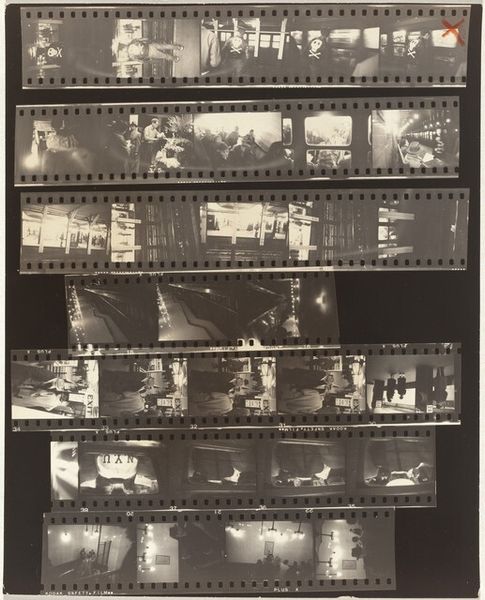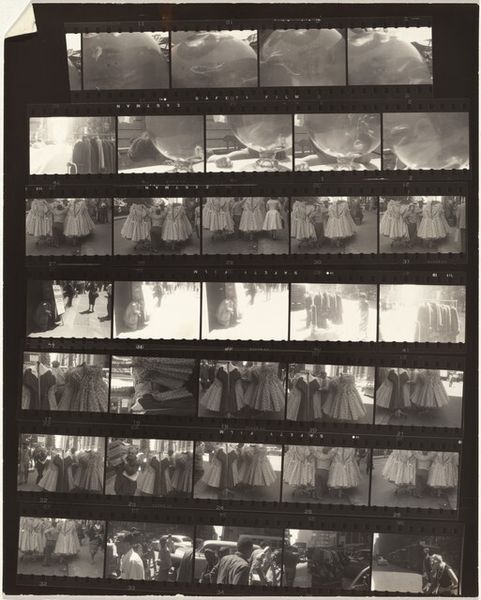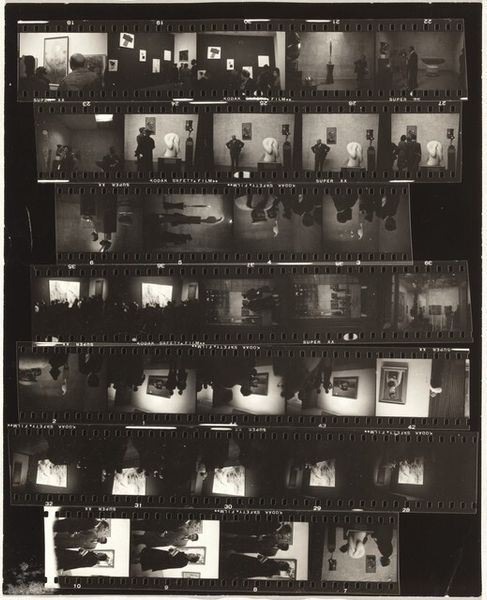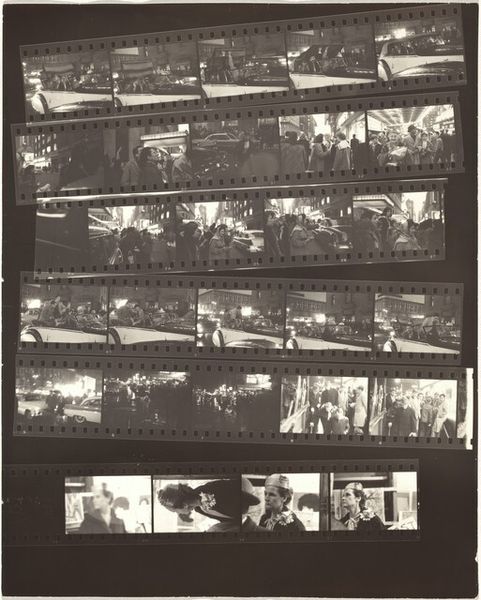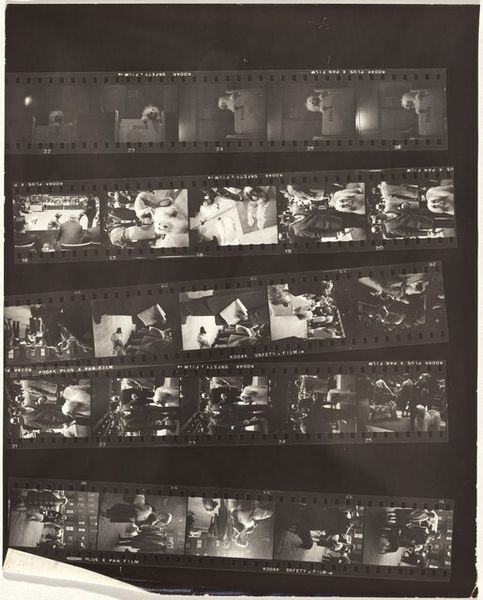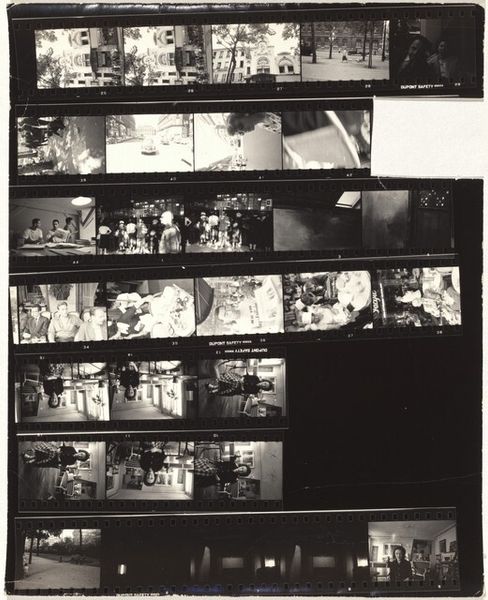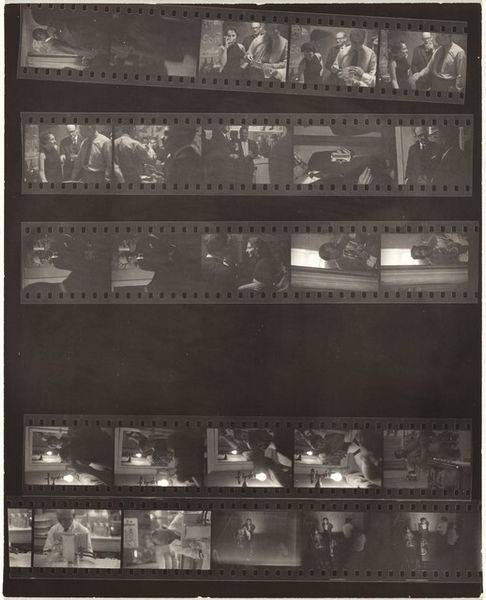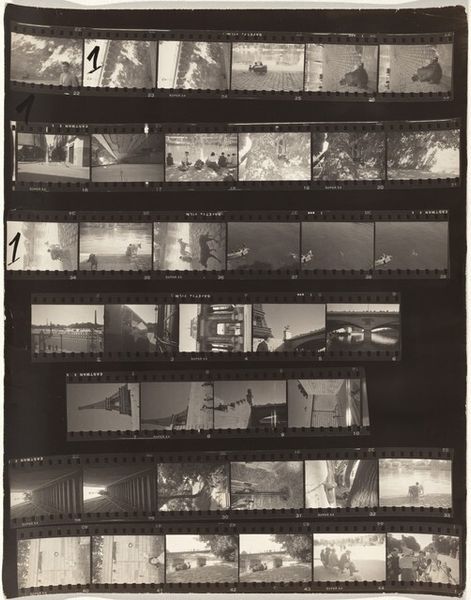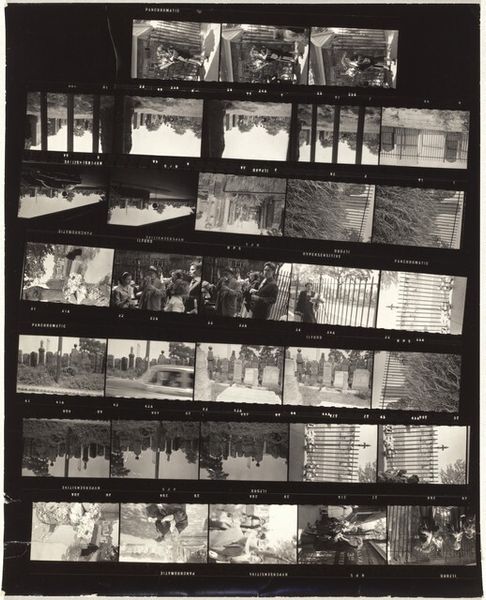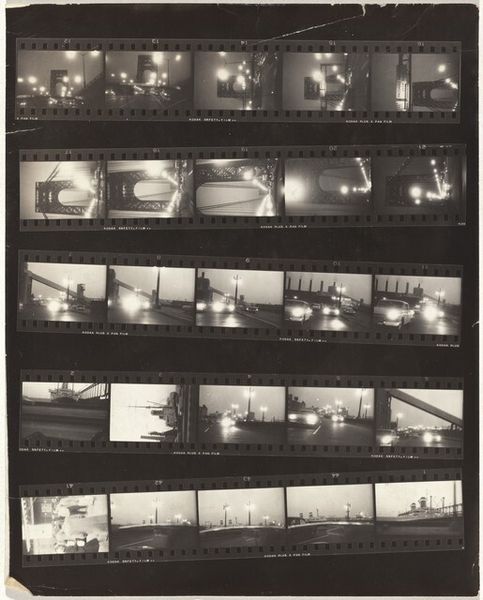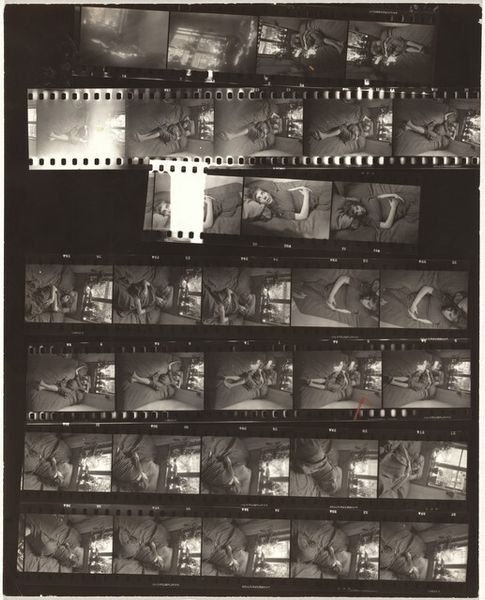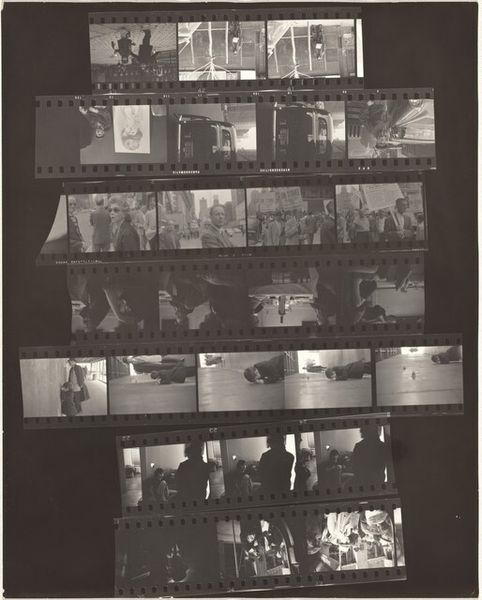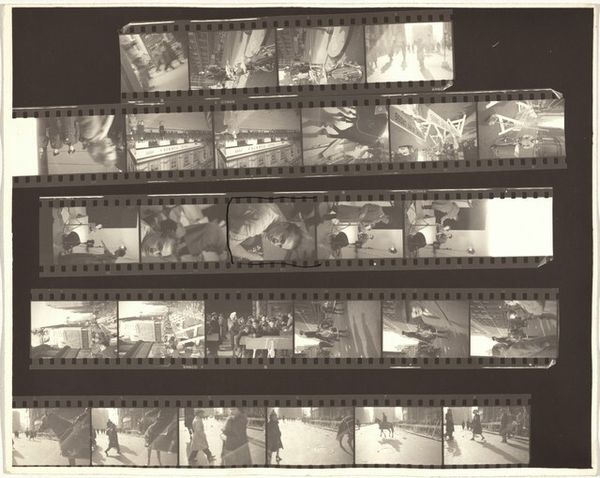
photography, gelatin-silver-print
#
film photography
#
landscape
#
archive photography
#
street-photography
#
photography
#
historical photography
#
gelatin-silver-print
#
genre-painting
#
realism
Dimensions: sheet: 25.2 x 20.3 cm (9 15/16 x 8 in.)
Copyright: National Gallery of Art: CC0 1.0
Curator: Here we have Robert Frank's "Museum of Natural History no number," created around 1960. It’s a gelatin-silver print depicting several strips of film. My first thought? Claustrophobia! Editor: Indeed. The composition, with its strips and sprocket holes, frames the photographs, emphasizing the fleeting nature of observation and memory. It’s the "decisive moment" multiplied, parsed, then laid out for our forensic consideration. The high contrast pushes the images close to illegibility. Curator: Yes, exactly! It’s like the building itself—this monument to cataloging and understanding nature—is flattened and replicated into manageable, if somewhat overwhelming, bits. The images within seem to capture both specimens and museum-goers—an overlap that almost feels voyeuristic. Editor: I perceive that the formal presentation heightens the thematic interplay between the observer and the observed. Note how the consistent light from the exhibit cases interacts with the intermittent lighting of the rooms containing them, generating tonal juxtapositions in each shot and each film strip. There's almost an aggressive assessment implicit in the composition. Curator: Aggressive is a great word for it. Each strip offers variations on a theme – animals in dioramas, blurred faces, reflections. Frank is not just capturing images; he's examining the very act of viewing. But for what purpose, if he dispatches of conventional imaging aesthetics? Editor: I submit, his method constitutes a critique, leveled at the idea of “natural” history, or our impulse toward classifying. Frank may be employing structural repetition as an overt means of questioning the relationship of documentary style and truth value. Curator: A truth that can feel a little unnerving. Ultimately the work underscores that observation is always subjective, shaped by context and mediated by technology. It's not a neutral gaze, which I expect has become evident from our dialogue about it. Editor: Precisely. These slivers ask us what it means to be "natural" and how to define nature within culture—or art— itself. Curator: Something I suspect we'll both continue pondering long after this recording concludes. Editor: An enriching, slightly bleak conundrum. Thank you.
Comments
No comments
Be the first to comment and join the conversation on the ultimate creative platform.
